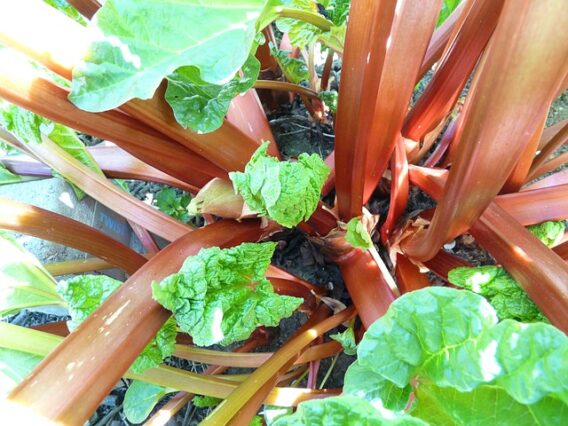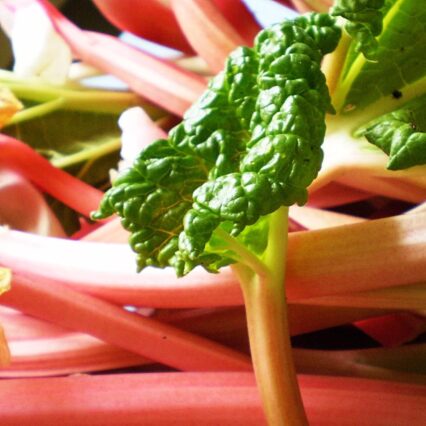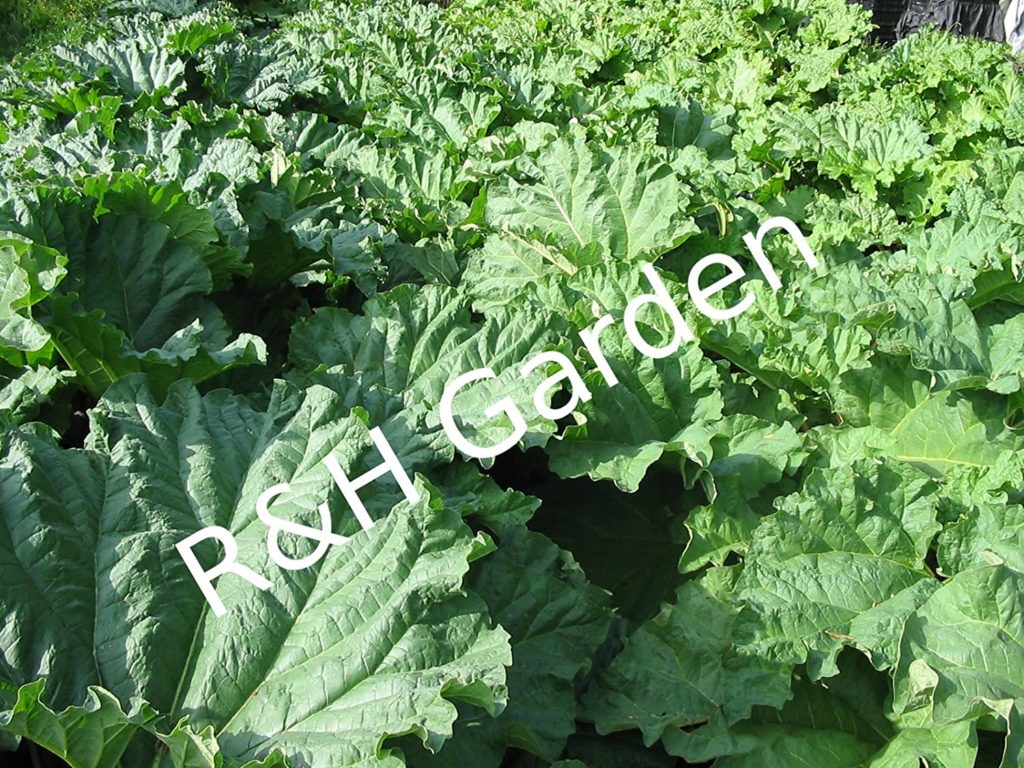Rhubarb is a versatile fruit that’s delicious in a variety of desserts, jellies, jams and compotes. It takes little effort to grow rhubarb at home. It is a perennial plant that will reward you each year with tangy pink stems.

Rhubarb is a useful crop to grow and provides great value. With the minimum of effort, you can enjoy plenty of rhubarb each year, and with its large leaves and stems, it is a plant that looks great in the garden.
You can grow rhubarb from seed, but it is much easier to buy a ‘crown’ of budding rhubarb. These are plants that have already been growing for a year and will produce a good amount of stems to be harvested the next year.
Planting Rhubarb
Rhubarb crowns can be planted in spring or autumn. A sunny position is preferred.
Plant the crown at soil level, and do not cover it as it could cause rot. Space out your rhubarb plants by 30 inches, to allow them to grow to a good size.
It is possible to grow rhubarb in pots, but make sure you use one that is a decent size. Rhubarb has a large root system, so any pot must be big enough for it to produce a good crop.
Caring for Rhubarb Plants
In spring, rhubarb produces flowers. Take them off as they appear so the plant puts its energy into growing the stems.
Some organic fertiliser applied to the soil each spring will encourage strong growth for the season.
Water well during hot, dry weather, especially if container grown.
Cut off the old stalks each autumn to expose the crown to frost. Rhubarb is one of those plants that benefit from frost as it helps it to produce a good crop the next season.
Every few years the crown will have got big enough to divide. Dig up the crown and split it into 3 or 4. Either replant or give some away!
What is ‘Forcing Rhubarb’?
It is possible to ‘force’ rhubarb into cropping earlier by covering the crown with a good layer of straw in January. A container is then put over the crown to keep the light from getting in. The result is rhubarb stems that are ready to eat a few weeks earlier in the year.
Harvesting Rhubarb
The flowers and leafy parts of the rhubarb should not be eaten as they contain a poisonous acid. It is only the stems that are edible.
Rhubarb stems are ready to eat from early summer. Pull a few stems by twisting them from the crown. Do not take more than half of the stems, as it will reduce the strength of the plant.



